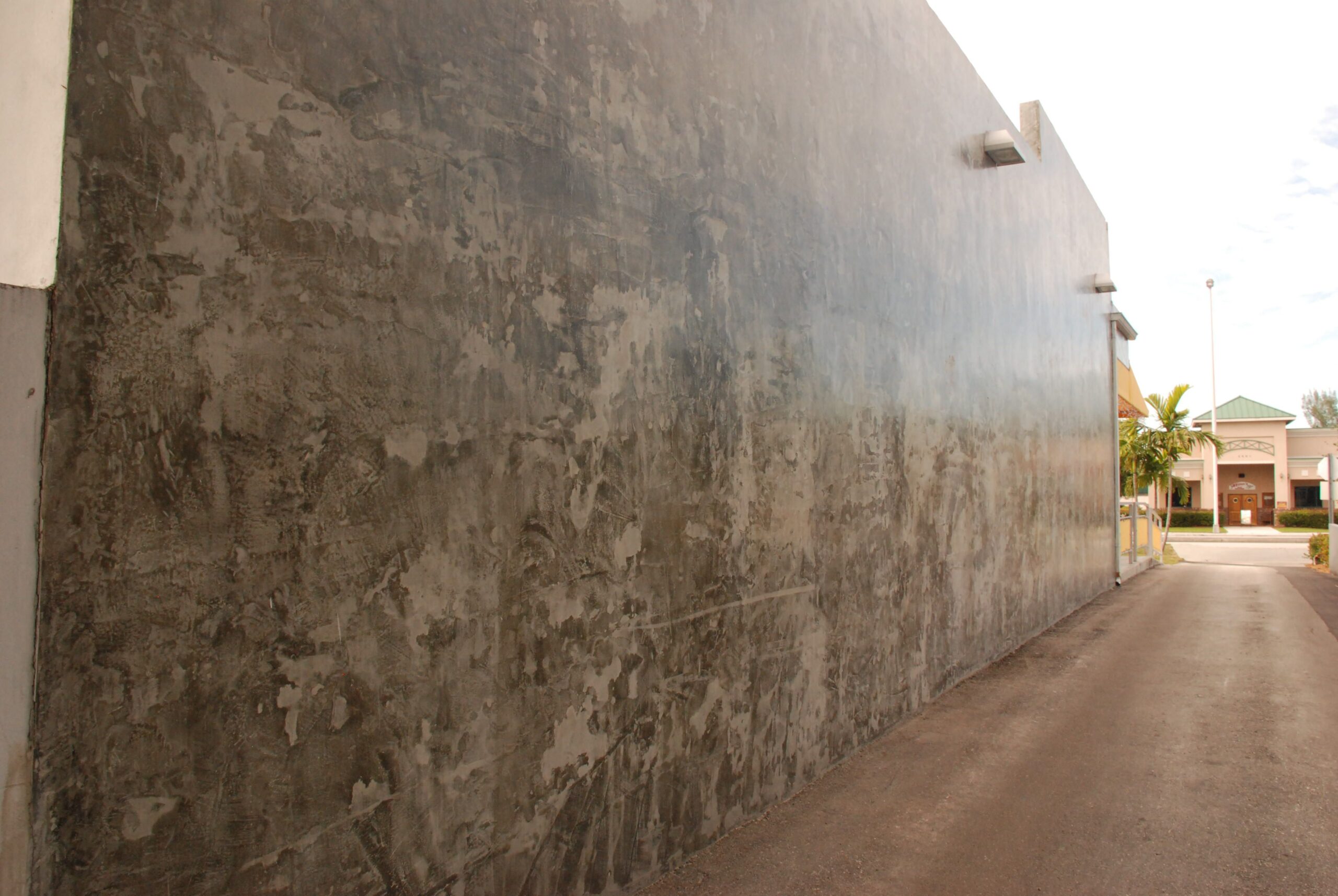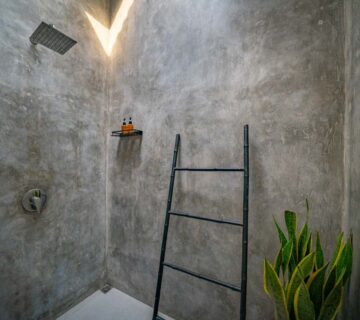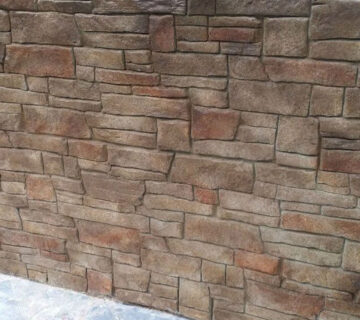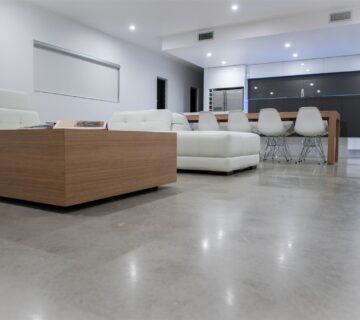Polished concrete flooring is becoming more popular, especially in places with hot and humid weather. It offers a clean, modern look along with strength and easy maintenance, making it a top choice for both homes and commercial spaces.
However, even though it’s durable, it’s important to understand how it reacts in damp conditions. Moisture and humidity can affect its performance if not handled properly.
In this blog, we’ll explore everything you need to know about polished concrete for humid weather, including the best installation methods, sealing tips, and simple maintenance practices to keep your floor looking great for years.
How Does Polished Concrete Perform in Humid Weather?
Moisture Absorption and Surface Damage
Polished concrete can absorb moisture in humid weather which can lead to a dull and uneven surface. If the floor is not sealed properly, then water weapons can enter inside and create small cracks. Therefore, proper sealing is important in moisture protection for floors.
Risk of Mildew or Mold
Polished concrete in the kitchen and bathroom can grow mildew in hot and humid climates. Sealing floors in humidity prevents the growth of molds and keeps the surface safe.
Curing Process Affected by Humidity
Humidity can slow down the process of curing in humid weather. Curing time increases in wet climates and proper drying is important. Proper airflow and temperature are important at the time of curing.
Use of Moisture-Resistant Sealers
Sealing polished concrete with moisture-resistant sealers makes it waterproof. These sealers keep the surface safe and also maintain its shine.
Regular Maintenance in Humid Areas
Cleaning of polished concrete floors should be done regularly especially in humid areas. Dry mopping, air ventilation and periodic resealing help to maintain the surface.
What Are the Best Practices for Installing Polished Concrete in Humid Areas?
Moisture Testing Before Installation
Moisture testing before installation is very important because the surface cannot be polished if it is already wet. You can use moisture meters or RH testing tools to measure humidity in concrete flooring.
Use of the Right Sealants and Curing Agents
Moisture-resistant sealers and slow-evaporating curing agents are ideal for high-humidity areas. These products keep the surface safe from water vapors by making a protective layer over it.
Surface Preparation to Avoid Moisture Traps
Grind the concrete surface properly before applying the polish so that any trapped water vapors can be removed.
Control Humidity and Temperature During Curing
A controlled environment should be maintained for installing polished concrete in humid areas. Fans and dehumidifiers can be used for proper drying.
Choose Experienced Installers
Trained Installers should be hired in tropical or coastal areas because floor care and installation can be tricky in these areas.
How Can You Maintain Polished Concrete Floors in Humid Climates?
Clean Regularly to Prevent Mold & Mildew
Dust mop regularly and also use a damp mop once a week with a PH neutral cleaner to keep your wet surfaces safe from mold and mildew.
Reseal Floors Regularly
Resealing polished concrete after every 8-12 months is important especially in coastal or humid climates. This is important because sealers make a protective barrier over the surface to protect the surface from moisture.
Keep Floors Dry
Water spills or moisture should be cleaned immediately. It is essential to use fans, exhausts or dehumidifiers in closed areas for floor care in humid climates.
Use Safe Cleaning Products
Only non-acidic and pH-neutral cleaners should be used. Avoid using bleach, vinegar or ammonia-based products because they can damage the surface. Special polished concrete floor cleaning liquids are available that are also humidity safe.
Manage Condensation Properly
- Install exhaust fans in wet areas.
- Use anti-slip mats to absorb water.
- Dry mop after cooking or shower to avoid moisture build-up in kitchen and bathrooms.
Does Polished Concrete Improve Indoor Climate in Humid Weather?
Yes, polished concrete can help improve indoor climate in humid weather. It has the ability to absorb and release moisture slowly, which helps control humidity levels inside the room. This makes the air feel more comfortable and less damp.
Polished concrete also has thermal mass properties, meaning it can store heat during the day and release it slowly, keeping indoor temperature more stable.
In humid climates, this helps reduce the need for air conditioning and improves energy efficiency. So, using polished concrete floors is a smart choice for keeping your space cool, dry, and comfortable.
Can Polished Concrete Floors Be Used in High-Humidity Areas Like Bathrooms?
- Polished concrete floors can be used in high-humidity areas like bathrooms and kitchens.
- They are water-resistant, durable, and easy to clean when properly sealed.
- Sealing is very important to prevent moisture from soaking in and damaging the surface.
- Without sealing, water can cause dullness, cracks, or mildew growth over time.
- To keep floors safe and beautiful, reseal them every 12–18 months in wet areas.
- Add anti-slip additives or use matte finishes to make the surface safer when wet.
- Regular cleaning and drying help maintain both aesthetics and durability.
- For extra safety, use bath mats or non-slip rugs near showers or sinks.
- With proper care, polished concrete is a stylish and practical choice for humid spaces.
Wrapping Up: Is Polished Concrete the Right Flooring for Humid Climates?
Polished concrete can be a great flooring choice for humid climates because it is strong, moisture-resistant, and easy to maintain. It doesn’t warp like wood or trap moisture like carpet, which makes it perfect for bathrooms, kitchens, or coastal areas.
When sealed properly, polished concrete prevents water from soaking in and helps stop mold, mildew, or surface damage. Its smooth finish is not only modern and stylish but also practical in damp environments.
However, the key to making it last is good installation and using the right sealers. That’s why it’s always a smart idea to talk to a professional who understands how to install and maintain polished concrete in humid conditions.
With the right care, this flooring can stay beautiful and strong for many years, even in places where humidity is high.








No comment